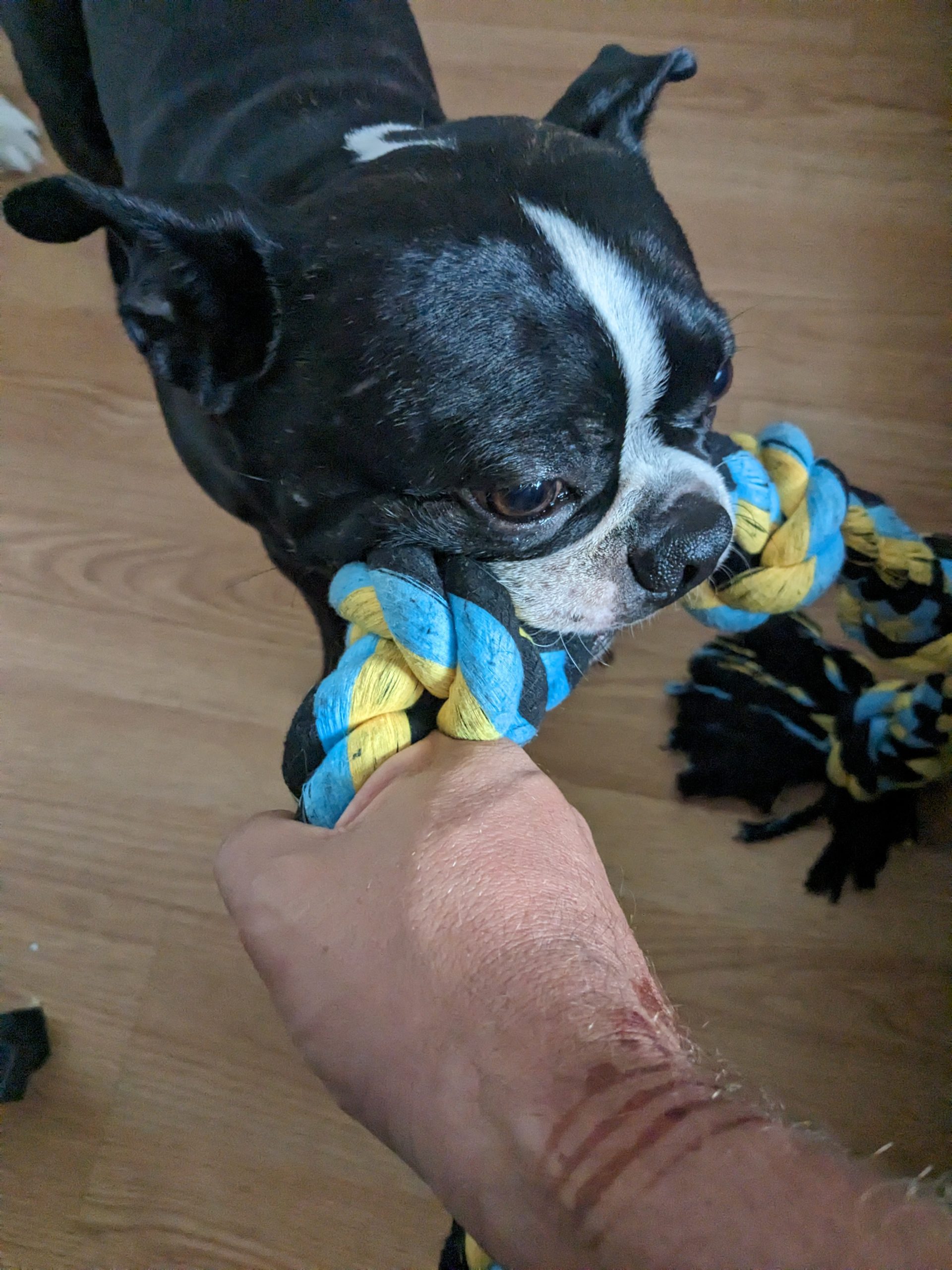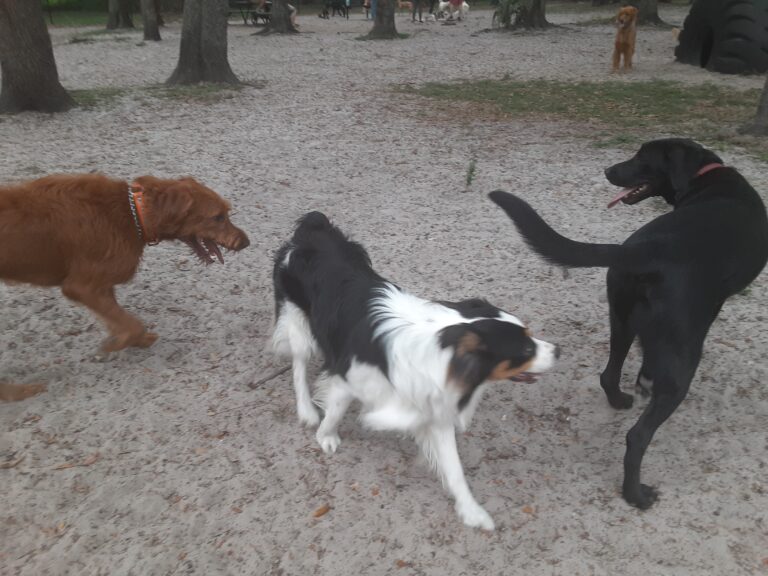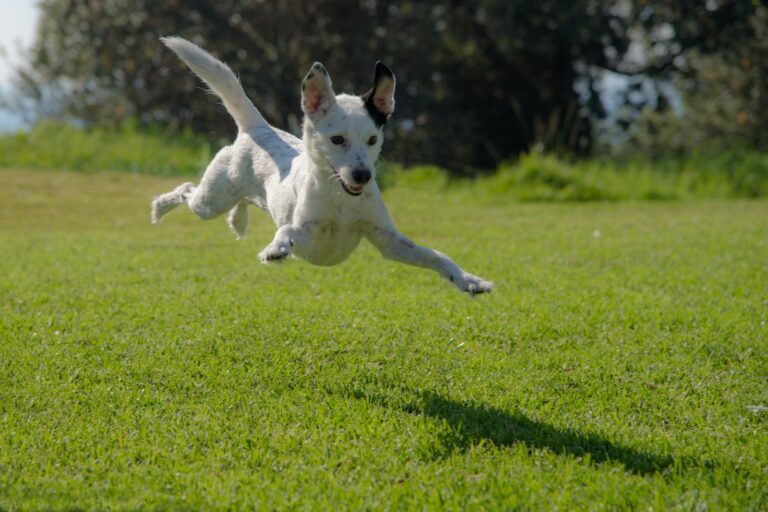“Understanding Why Boston Terriers Enjoy Tug-of-War: A Look into Canine Instincts”
In the heart of every playful pup, there exists a primal spark, a vestige of their wild ancestry that yearns for expression. For the spirited Boston Terrier, this spark ignites with particular fervor in the timeless game of tug-of-war. With twinkling eyes and tails at attention, they eagerly dive into this spirited contest, their enthusiasm infectious and their zest for play boundless. But what lies beneath this exuberant display? What compels our Boston Terrier companions, with their distinctive tuxedo coats and boundless energy, to be drawn to this age-old game? In this exploration, we embark on a journey into the canine psyche, uncovering the profound instincts and social dynamics that fuel their love for tug-of-war. Join us as we unravel the captivating tale of paws, jaws, and the joyous dance of tugging that forms an indelible bond between human and hound.

Instinctual Behavior: Unveiling the Origins of Tugging
Tugging is a fundamental aspect deeply embedded in a dog’s instincts, tracing its roots to the ancestral behaviors of canines in the wild. This instinctual tendency, preserved over evolutionary periods, finds its expression in the playful activities of hunting and social play. Through these engaging behaviors, dogs naturally cultivate vital skills essential for survival, including the development of robust jaw strength and finely tuned coordination. In the untamed realms, dogs partake in activities involving pulling and tugging, serving as a mechanism to refine their physical prowess. This evolutionary trait, resiliently retained in domesticated breeds such as the Boston Terrier, is evident in their affection for games like tug-of-war. The manifestation of this primal instinct in the context of playful interactions not only reflects the enduring connection to their wild ancestors but also contributes significantly to the physical and mental well-being of domestic dogs.
Building Bonds through Tug: The Social Dynamics of Play
Tug-of-war functions as a powerful bonding tool, fostering a strong connection between dogs and their human companions or fellow canine friends. This cooperative game, beyond being an enjoyable pastime, cultivates a sense of teamwork, contributing to the reinforcement of emotional bonds and mutual understanding among the participants. Engaging in shared play, dogs and their owners deepen their connection, creating a positive environment that promotes trust and effective communication. This shared involvement provides a unique avenue for dogs to express themselves, further solidifying the bond between them and their human companions. The intertwining of play and companionship within tug-of-war not only adds joy to their interactions but also strengthens the foundation of a harmonious relationship built on shared experiences and mutual enjoyment.
Physical and Mental Fitness: Tug-of-War as a Holistic Exercise
Participating in tug-of-war provides dogs with a twofold advantage, combining physical exercise with mental stimulation. This dynamic activity specifically targets their jaw and neck muscles, demanding both strength and coordination. Simultaneously, it engages their cognitive faculties by necessitating strategic thinking, problem-solving, and decision-making. Beyond its physical benefits, tug-of-war serves as a cognitive challenge for dogs. It prompts them to devise strategies to gain control of the toy, elevating their mental acuity and offering a valuable outlet for intellectual stimulation. This integration of physical and mental engagement not only keeps dogs physically fit but also contributes significantly to the enhancement of their cognitive abilities, providing a well-rounded and enriching experience through the game.
Satisfying the Prey Drive: Channeling Canine Instincts
Tug-of-war aligns with a dog’s natural prey drive, addressing their intrinsic need to engage in the instinctual sequence of chasing, capturing, and conquering. Through this controlled version of predatory behavior, dogs discover a safe and supervised outlet for expressing their primal instincts. Especially for dogs with a strong hunting background, such as Boston Terriers, tug-of-war serves as a means to satisfy their innate desire for activities reminiscent of hunting. This controlled outlet not only fulfills their instincts but also serves as a preventative measure against undesirable behaviors linked to an unexpressed prey drive. By providing a structured and supervised environment for these natural inclinations, tug-of-war becomes a constructive and fulfilling activity that supports a dog’s well-being and helps maintain a harmonious relationship with their human companions.
Tug-of-War: A Source of Positive Reinforcement and Training
Utilizing tug-of-war as a training tool proves to be highly effective, especially for dogs who derive enjoyment from this activity. It functions as a potent form of positive reinforcement, serving as a motivational incentive for them to display desired behaviors and adhere to obedience commands. Integrating tug-of-war into training routines becomes a mutually beneficial strategy for both the dog and the owner. This inclusion establishes a positive association with learning and command-following, rendering the training process not only more enjoyable but also more effective. Furthermore, the shared achievement and reward-based interactions during tug-of-war sessions contribute to the strengthening of the bond between the dog and their owner. Through this collaborative and positive approach to training, both parties actively engage in a process that fosters not only obedience but also a deeper connection and mutual understanding.
In Summary
In the interplay of tugging, we catch a glimpse of the quintessence of the Boston Terrier—a creature characterized by boundless spirit, instinct, and companionship. Through this timeless game, they offer us a window into their ancestral past, serving as a poignant reminder of the untamed vigor that continues to pulse within them. As we observe the gleam in their eyes and experience the pull of the toy, we transition from mere spectators to active participants in a shared adventure. In each tug and playful growl, we encounter a testament to the enduring connection shared between human and hound—a silent language that transcends words and resonates directly with the heart. The tug-of-war, it appears, transcends being just a game; rather, it emerges as a bridge that unites us in joy, trust, and the unfiltered pleasure of being together. Let us immerse ourselves in this enchanting ritual, allowing the echoes of laughter and the patter of paws to fill our hearts with warmth. In these moments, we discover not only the thrill of play but also a profound understanding of the beautiful souls that grace our lives with their presence. Embrace the tug, for it represents a celebration of life, love, and the timeless bond shared between us and our beloved Boston Terriers.






